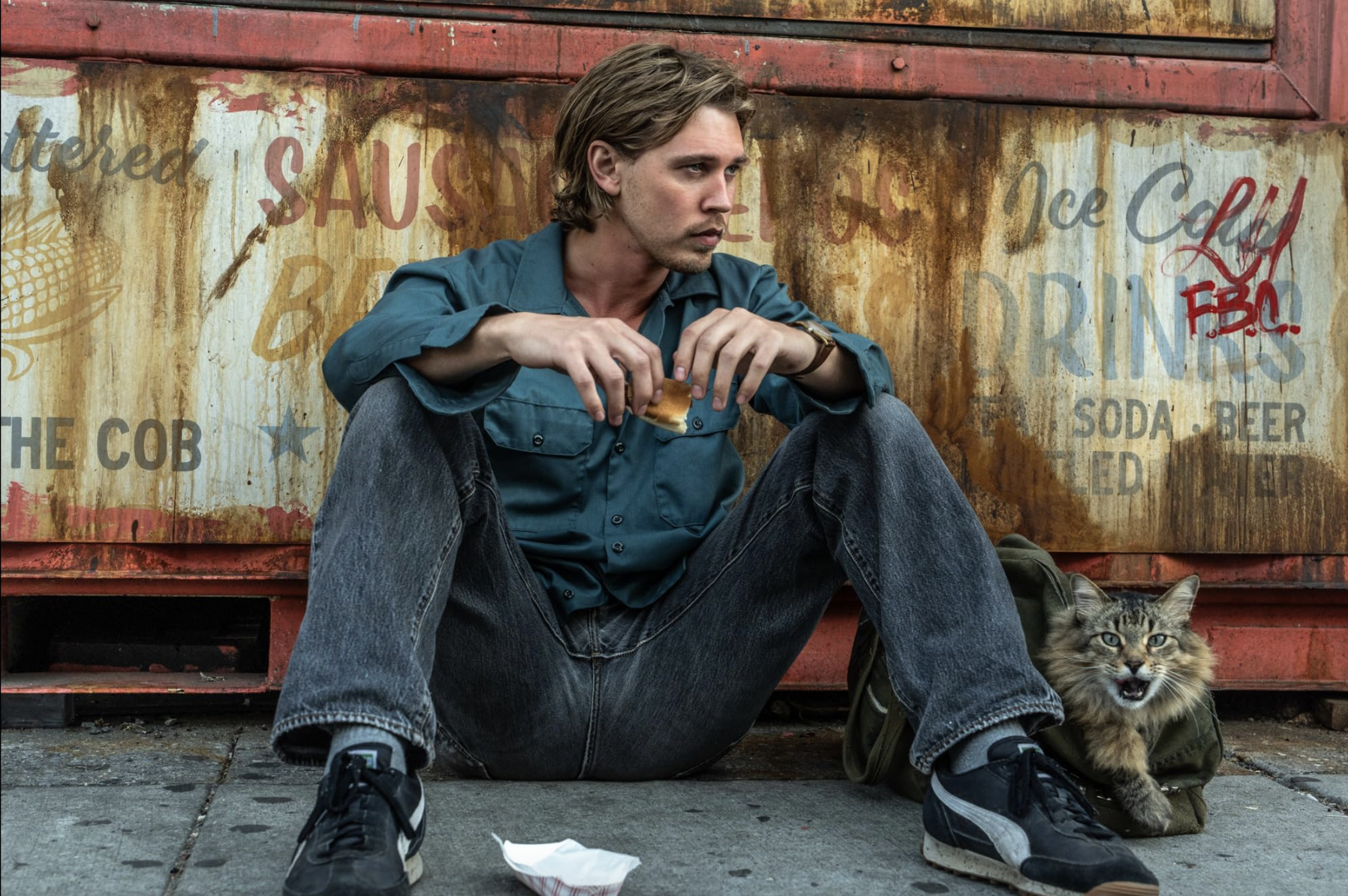Minor Spoilers for “Caught Stealing” ahead.
How many movies compel us to feel the raw emotions of a flawed “town boy” who is trapped in between a rock and the hard place of New York’s ungentrified Lower East Side—and also a converted cat-lover?
Based on screenwriter Charlie Hurston’s book of the same name, Darren Aronofsky directs the touching, gritty movie “Caught Stealing” starring Austin Butler and Zoe Kravitz. During the week of Aug 29, “Caught Stealing” made 7.8 million dollars on box opening weekend, placing in third and surpassing “The Roses,” which was released on the same day. After Labor Day, it grossed 9.5 million dollars internationally and has performed above average in the domestic box office. In looking at the 9.8 million dollars made by “Jaws”’ four day run, the film’s success is not something to dismiss. While the film may not have made itself as known compared to “Jaws”’ 50th anniversary theater appearance or James Gunn’s “Superman,” its action scenes will leave you sitting at the edge of your seat, immersing yourself in the dark humor of the 1990s.
Henry “Hank” Thompson (Austin Butler) is thrust into the Mafia scene after becoming the victim of fallout from debt accumulated by his neighbor, Russ—a drug dealer for a criminal syndicate. Russ leaves behind his angry cat, Bud, for Hank to take care of while going to London to visit his sickly father. The thrill of the movie stems from the constant twists and turns nailed into the plot, as well as Hank’s motivation to stay alive despite his struggles with survivor’s guilt and alcoholism. The fights, although not the main star of the show, contain impressive choreography and even more impressive acting.
In addition to rich performances, the physical elements of the film stand out. The settings of “Caught Stealing” are not given enough credit. They consist of a Chinese supermarket with fish piled everywhere, a bar mitzvah in a small white house that shelters members of an Orthodox Jewish community and shoddy apartments that ground the film unmistakably in the gritty 1990s New York.
The violence is almost always one-sided in nature, leaving Hank persistently threatened and crushed by gang members who wield guns. This power dynamic might seem off-putting, but it is exactly this which depicts the overwhelming greed and cruelty of the Mafia. The Mafia in this film is not glorified, it is shown as a cruel and violent force. The choreography in the action scenes emphasize the dark setting and Hank’s suffering. He confronts misfortune after misfortune and mobsters who will stop at nothing to retrieve the millions of dollars hidden by Russ, especially if it means hurting the people Russ loves. As an ex-baseballer and current bartender, Hank must fight for his life outside of a stadium … with a baseball bat, instead of firearms.
The realism of Hank’s character is best showcased through his addiction. After having a ruptured kidney removed (a result of his run-in with two Mafia members), Yvonne, his girlfriend, tells him that he is unable to drink ever again. He tells her and Bud that he can and will stop, and proves it by dumping his entire alcohol stash into the toilet. However, he ends up running back to alcohol as he is peer-pressured by his barmates to drink a shot, and in the process, self-sabotages himself and pushes away the woman he loves. He is incapable of dismantling his survivor’s guilt and forgetting the horror-inducing image of his severely injured knee, both being reasons why he abandoned his baseball career in high school. It is not until much later in the film that he is forced to confront these two traumatic things, and even then, the audience is left to wonder whether he actually overcomes them when he returns back to his hometown.
Although Hank’s unshakeable determination makes him a widely liked character among the film’s audience, Yvonne’s role tends to be overlooked by those who simply see her as “Hank’s girl.” He never explicitly tells her about his newfound involvement with the Mafia, but Yvonne continues to support him closely, treating his bloody nose with a tampon and fixing up the stitched area on his torso with her limited medical supplies. Her forgiving but stubborn nature portrays her as an independent woman who can still be in love. She puts up with Hank, but also recognizes her own worth and does not hesitate to push him away when he drunkenly insults her.
If these reasons alone don’t convince you to catch “Caught Stealing,” then the biting cat should.


